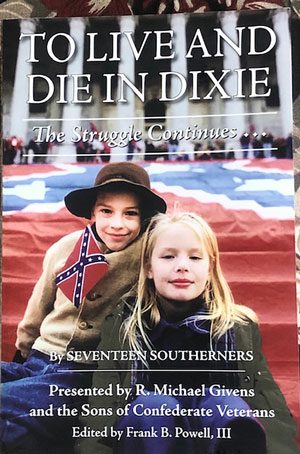The Menace of Sectionalist Politics and Protective Tariffs
Part 8 of 8 on the Morrill Tariff

Protectionist tariffs are a general menace to economic prosperity. Near the beginning of the Great Depression, one of the highest tariff bills in U.S. history, the Smoot-Hawley Tariff Act, was passed on June 17, 1930, by Congress and signed by Republican President Herbert Hoover, who had strongly opposed the bill. Its purpose was to protect suffering American workers, farmers, and businesses from foreign competition. Up until then, exporters were faring well and remained one of the relative strengths in the economy. The House passed the bill 264 to 147, with 244 Republicans and 20 Democrats voting for it. The Senate passed it 44 to 42, with 39 Republicans and 5 Democrats voting for it. As could have been predicted by historical experience, exports soon suffered, dropping 61 percent with even Canada introducing a retaliatory tariff against U.S. goods. Unemployment was at 7.8 percent when Smoot-Hawley passed and jumped to 16.3 percent in 1931 and peaked at 25.1 percent in 1933.62
Mark Thornton and Robert B. Ekelund Jr. in their 2004 book on the economics of the Civil War, summarize some of their general economic conclusions: Protective tariffs benefit some commercial or regional interests in the short to intermediate term, but they do more harm than good to the overall economy. Obviously, some interests are injured. Tariffs are essentially a redistribution of wealth through political means. Protected economic interests often become non-innovative drags on the economy and taxpayers.63
In 1862, British writer John Spence summarized Southern grievances in regard to the Morrill Tariff with penetrating brevity:
“They hold that, under a Constitution that prescribes perfect equality, and forbids ‘preference,’ they ought not be compelled to pay enormous duties on all they require for their industry from abroad, while all that is required for its industry by the North, is obtained by it duty free. They have protested against this for thirty years in vain. They now see that, under the irresistible growth of population in the North, political power has passed from its original tenure and is gone without hope of return. They feel the bitterness of the gnawing agitation long carried on by the Abolitionists, in plain violation of the spirit of the Constitution. They ask if it be expedient to remain under a bond which no longer suits the other parties to fulfill…In the opinion of the people of the South, it has been made to provide for the welfare of the North at their expense…Looking to its continuance, they see themselves consigned to a perpetual minority, in hopeless subserviency…”64
Many modern academic apologists for Lincoln’s war against the South have recently taken up the cry that because the published declarations of four states arguing the reasons for their secession contain many textual references to slavery, that the war was really just about slavery. Actually, the South Carolina Declaration of Secession, adopted on December 24, 1860, uses some form of the words slave or slavery only 14 times and other words or phrases referring to slavery, slaves, or fugitives 7 times for a total of 21 references in a document of 2,209 words. Seven, or one-third of these, refer to Northern State violations of the Constitution regarding the 1850 Compromise Fugitive Slave Law. These were cited as examples of Northern breach of the Constitutional contract. The vast majority of the South Carolina Secession Declaration was a carefully crafted history of the Constitution and Northern disregard for its articles and principles. Their historically irrefutable argument was that the Constitution was a compact between the States, and if Northern States breached the essential terms of the compact, then the offended parties are free from any further obligation to it.
South Carolina also considered any laws excluding slavery from the territories as a design to
limit Southern political power in Congress. This was a political numbers game, which exposed South Carolina, as part of a regional minority, to being trampled by a Northern majority almost exclusively dedicated to its own aggrandizement.
Counting the number of times slavery was mentioned in secession conventions outside of any consideration for their literary, economic, political, and constitutional contexts would seem to be a form of academic malpractice. The larger context indicates that under Northern dominance, the Union government had become oppressive and dedicated to its own narrow sectionalist interests. For the South, States Rights afforded the primary protection against these sectionalist abuses. What the secession declarations really prove is that Southerners had strong reasons to believe that their political rights and economic welfare were unsafe under Northern political dominance.
Tariffs were not specifically mentioned in the South Carolina Secession Declaration, but evidence abounds otherwise that high protective tariffs had ramped up secession talk in 1824, 1828, 1830, 1832-1833, and with the Morrill Tariff in 1860. There are few better examples of corrupt and abusive sectionalist politics. In 1860, South Carolina and the Gulf States were left with no responsible and honorable alternative but to secede.
No serious historian believes that the Union Army marched south to free slaves. Southern
leaders had no ambitions for Northern conquest or any reasonable hope for national political dominance. The myth of the “Slave Power” was a wacko-conspiracy theory used for Northern political campaigns. Union military action was to prevent Southern secession. The cause of the war was Lincoln’s call for 75,000 troops to invade Southern states. The invasion triggered more secessions and attempted secessions in the upper South and several Border States.
Nearly 40 years of economic abuses through unjust tariff laws had shattered any
confidence or hope that Northern leaders could be trusted to give the South fair treatment. The Morrill Tariff was one of the last straws to break that trust—the ultimate chapter in an outrageously unfair tax system by which the North benefited immensely for decades while the South suffered. The terms for the Morrill Tariff were so unjust that the cotton-producing states—South Carolina and the Gulf States—could hardly remain in the Union without sacrificing their honor and their economic and political future.
To the North, Southern secession meant a loss of over 80 percent of their tax revenues.65 More ominous to Lincoln and Northern industrial and commercial interests, an independent South would be a free-trade South competing with the protective tariff dependent North. It would have meant many years of economic devastation for the North—until they could shake their addiction to politically popular but fallacious economic theories and abandon the misguided mercantilist policies of the so-called “American System” of Henry Clay and Abraham Lincoln.
In a 2006 study using mathematical regression analysis, Douglas Irwin analyzed the impact of the 30 percent average tariff during the year 1885. He found that protected industries were not able to increase their profits by the full 30 percent because the higher prices caused by the tariff increase also increased their costs. Their net profit increase through government protection was thereby reduced to about 15 percent, which explains why they kept crying for still higher tariffs. On the other side of the coin, the tariff reduced exporter profits by about 11 percent. The total redistribution of income across commercial interests and regions was a whopping 9 percent of total GDP.66 This, of course, fell most heavily on the South with only half the population of the North but the source of over 80 percent of export commerce. Most consumers and voters, especially in the North , however, were not directly involved in import and export commerce, so their economic loss was less visible than that of individual taxation , and politicians were able to favor special commercial interests with reduced impact at the polls.
High tariff rates continued to punish the South during Reconstruction and long afterword—for nearly 50 years—until President Woodrow Wilson got the Underwood Tariff passed in 1913. This reduced the average dutiable rate from about 40 percent to 27 percent. Even more important, it increased duty-free items from 54 to 69 percent, reducing the effective average tariff from 18 to 8 percent, a 55 percent reduction. The revenue was replaced by an income tax of 1.0 percent on income over $3,000 per year than affected only about three percent of potential taxpayers. An income tax was considered more secure in times of war or national security threats.67 & 68
As President Andrew Jackson pointed out in 1832, there are some protectionist tariffs that are warranted on the basis of national security. We do not want to be dependent on other nations, especially potentially hostile nations, for materials necessary for national defense. In January of 2018, President Donald Trump, based on The Trading with the Enemy Act of 1917 and the emergency-oriented trade acts of 1974 and 1977, began imposing high tariffs on steel, aluminum, and other materials and products critical to national security. The brunt of these actions were directed against unfair and predatory trade practices by the People’s Republic of China, which were causing massive U.S. trade deficits damaging to American workers, U.S. businesses, national security, and genuine free trade. These were bold actions, but righted the situation while Trump was in office.
Few people know about the Morrill Tariff today. Its place in history is continually suppressed. It does not fit with the politically correct whitewash of the Northern cause. Many who do acknowledge it want the rest of us to believe that it was a minor and essentially insignificant factor in the causes for secession and war. To the contrary, the North prospered, and the South suffered because of previous protective tariffs, and the Morrill Tariff promised to make Southern suffering unbearable. The Morrill Tariff is a powerful and astonishing example of shortsighted partisan greed and its catastrophic consequences. No wonder many Americans would like to see it forgotten and covered over with a more morally satisfying but largely false narrative of the causes of Southern secession and Northern aggression. But wisdom is found only in truth.
--------------------------
Abbreviated Footnotes (FN) 62-68
FN62 Smoot-Hawley Tariff Act, Wikipedia (http//en.org/wiki/Smoot%1E2%80%931Hawley_Tariff_Act)
FN63 Mark Thornton and Robert B. Ekelund Jr; Tariffs, Blockades, and Inflation: The Economics of the Civil War (Wilmington, DE: SR Books, 2004), pp 18-19
FN64 Spence pp. 194-5.
FN65 Adams, p. 27; DiLorenzo pp. 239-240
FN66 Irwin, Douglas A. Tariff Incidence in America’s Golden Age, April 2006, NBER Working Paper No. w12162. Available at SSRN: ssrn.com/abstract+896470.
FN67 Irwin, Douglas A. Clashing over Commerce: A History of U.S. Trade Policy, 2017, pp 338-339.
FN68 Philip Leigh. Southern Reconstruction, 2017, pp 105-106.
--------------------------
The original version of these 8 revised and expanded articles was published as a single article in the November-December 2011 issue of The Confederate Veteran. This article was also published as one of 17 essays included in the 2014 book: To Live and Die in Dixie…the Struggle Continues, by Seventeen Southerners, edited by Frank B. Powell, III.
Mike Scruggs, aka Leonard M. Scruggs, is the author of two books: The Un-Civil War: Shattering the Historical Myths, and Lessons from the Vietnam War: Truths, the Media Never Told You, and over 800 articles on military history, Islam and the Middle East, immigration, intelligent design, and current and historical economic and political affairs. He holds a BS degree from the University of Georgia and an MBA from Stanford University. A former USAF intelligence officer and Air Commando, he is a decorated combat veteran of the Vietnam War and holds the Distinguished Flying Cross, Purple Heart, and two Air Medals. He is a retired First Vice President for a major national financial services firm and former Chairman of the Board of a classical Christian school. He has served on several state government advisory and university fund raising boards and commissions in Alabama and North Carolina.
His weekly articles and archives may be accessed online through USMedia.buzz and the Times Examiner at timesexaminer.com/mike-scruggs.
.









 Mike Scruggs is the author of two books: The Un-Civil War: Shattering the Historical Myths; and Lessons from the Vietnam War: Truths the Media Never Told You, and over 600 articles on military history, national security, intelligent design, genealogical genetics, immigration, current political affairs, Islam, and the Middle East.
Mike Scruggs is the author of two books: The Un-Civil War: Shattering the Historical Myths; and Lessons from the Vietnam War: Truths the Media Never Told You, and over 600 articles on military history, national security, intelligent design, genealogical genetics, immigration, current political affairs, Islam, and the Middle East. 


